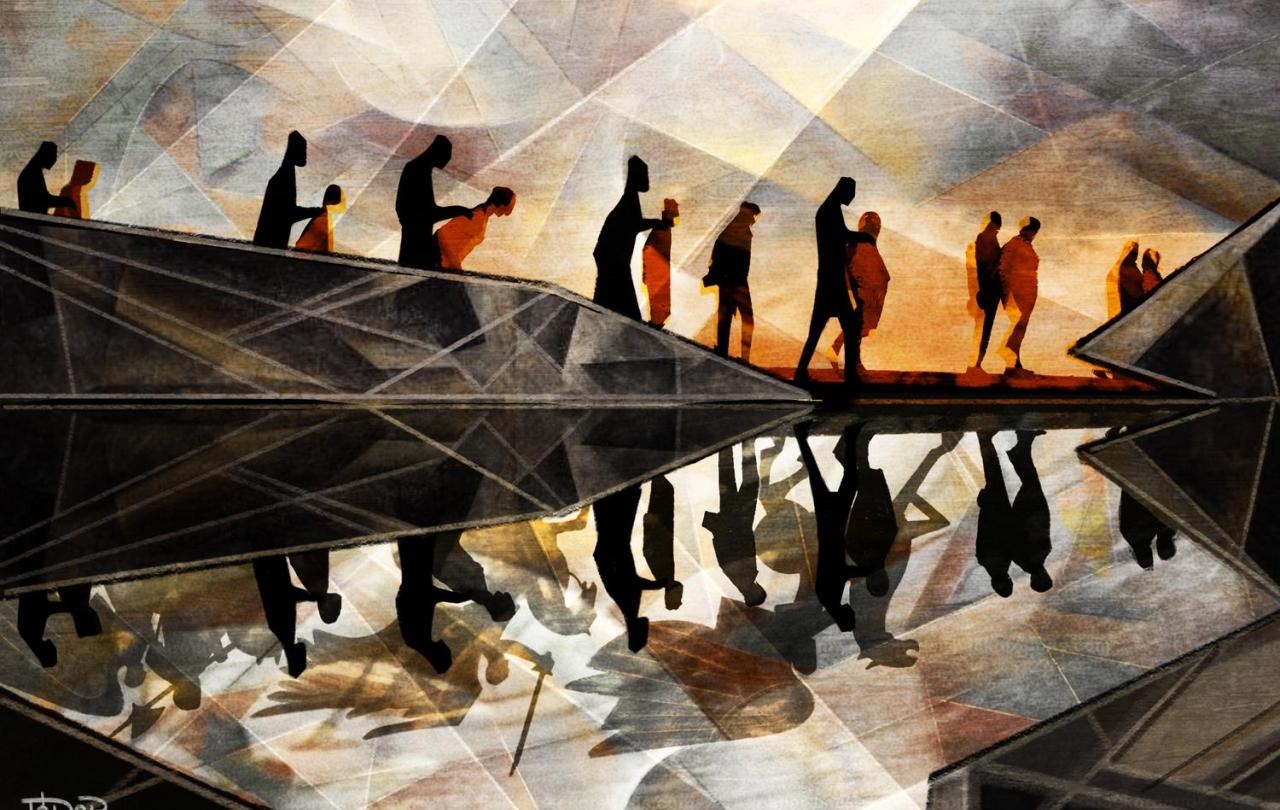Subverting religious ideas
But using the language of Christianity is often about more than co-opting it for a designer’s own glory. It’s often also about subverting the symbolism of religion - to make statements about the hypocrisy or limitations of religion on individuals.
One of the most famous shows at London Fashion Week was the 1996 Alexander McQueen Dante at Christ Church in Spitalfields, East London. Based on the Christian-inspired Dante’s Divine Comedy, the collection featured a combination of photographs taken during the Vietnam war, bold takes on men’s tailoring, and black crucifiction-adorned eye masks borrowed from the work of photographer Joel-Peter Witkin. According to McQueen, “religion has caused every war in the world, which is why I showed it in a church.” Other more recent shows at churches include Dilara Findikoglu's show in 2018 at St. Andrew’s Holborn which dressed models in devil-inspired costumes and Julien McDonald’s show at Southwark Cathedral in 2019 which was heavily criticised for bringing revealing clothes into a sacred space.
McQueen and other designers use their shows in churches to question its integrity. Many who have experienced hurt in the church or from Christians in their personal lives resonate with these fashion statements.
Fashion’s subversion of religious ideas cuts to a core tension many of us experience. I have always felt drawn to Christian ideas. I love the idea that God created humans in his image to “do his handiwork.” Such creativity has fueled human endeavours as famous as Michel Angelo’s Sistine Chapel and as ordinary as my personal wardrobe. And that a loving heavenly Father sacrificed himself to redeem the world and restore creation-it is an extraordinary thought.
At the same time, the history of the world, of Christians and of the church feels weighty. Christians have used religion to justify colonialism, racism, slavery, and a host of other atrocious acts of taking advantage over vulnerable people. In our personal lives, Christians we know may have acted in bad faith- as greedy, selfish and unkind in their dealings with others.
And so, Fashion often encapsulates this duality of having both awe and anger at the church.
But we also know that Fashion isn’t an answer to these problems either. Powerful people in the fashion industry deal with the same temptations of greed and power that others do. The industry is fraught with its own problems of hypocrisy, of doing harm to the women they praise, to the earth whose materials they use, and the vulnerable whose labour they exploit.
I work at an arts and fashion university, where I often see students creatively wrestle with ideas of life, death, faith and hope. Sometimes, like Gaultier, they feel inspired by the church’s rich iconography. At other times, like McQueen- they are upset at a world created by people who take advantage of power and use religion against others. It can be easy for those who come from faiths that are questioned in art to be outraged at this subversion- like many were with McQueen’s original show.
In the novel I am Asher Lev by Jewish rabbi Chaim Potok, a young Hasidic boy in 1950s Brooklyn grapples with the limitations of his religious community as he realises his passion for art. A key moment comes when he realises that there is a difference between the “good” and the “beautiful.” His mentor Jacob tells him,
“I do not sculpt and paint to make the world sacred. I sculpt and paint to give permanence to my feelings about how terrible the world truly is.”
An anthropologist by trade, I look at the work of Fashion designers who use and subvert Christian ideas as a culture grappling with faith in a post-religion world. Humans are unique in their ability to change culture through the things they make and the concepts that come out of them. As a Christian, that creativity, and that freedom to wrestle with life’s toughest questions, are both gifts from God.
Faced with fashions that challenge the status quo or make people uncomfortable, I ask this- What questions is this designer asking? Do I have similar questions? And importantly- where can I start to find some answers?






